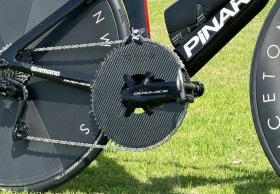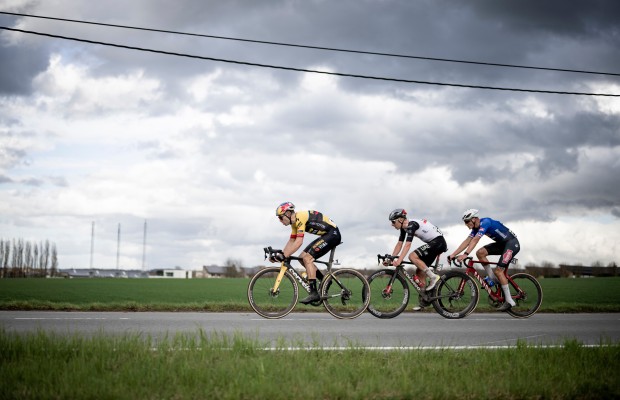Moving a 68t chainring is a matter of mathematics
A few weeks ago, many were surprised during the time trial of the UAE Tour by the monstrous 68-tooth chainring that INEOS Grenadiers cyclist Tobias Foss mounted on his bike. However, this does not mean that the Norwegian is a superhuman prodigy to move such a large chainring. There are other good reasons, more related to marginal gains, for this choice.

The mechanical efficiency behind Tobias Foss's gigantic 68-tooth chainring
Most cyclists, when they hear about the size of the large chainrings normally used in time trials, tend to be scared and think about the brute power needed to move such a big gear. It is true that the larger the chainring, the longer the gear range we achieve. However, many times we forget that the gear ratio, that is, the meters the bike advances with each pedal stroke, depends not only on the chainring but also on its combination with the cassette cogs.
In the INEOS Grenadiers bike, which uses Shimano Dura-Ace Di2 groupsets, it is common to find a cassette with 12 cogs with teeth numbering 11, 12, 13, 14, 15, 17, 19, 21, 24, 27, 30, and 34. Remember that, to calculate the gear ratio, you just need to divide the number of teeth on the chainring by the number of teeth on the cog. This gives us the gear ratio. If we multiply this figure by the wheel circumference, in the case of using 700x28 tires, currently the most common on the road, about 2,150 mm, we get the meters advanced per pedal stroke.
RECOMENDADO

How many calories are burned when cycling

What is heart rate variability and how does it affect the cyclist?

Fat Max Training to efficiently eliminate fat

Change wheels if you want to transform your bike's behavior

What bike size do you need? Here's how to find out

How does age affect performance and recovery?

Obviously, with a 68x11 gear ratio, we get an enormous gear ratio of 13.29 meters per pedal stroke, practically impossible to move. In fact, if the cyclist pedaled at 90 revolutions per minute, a very common figure for any cyclist on flat terrain, with that gear ratio, they would reach a speed of 71.7 km/h.
However, if we choose an intermediate cog, for example a 68x19, we see that the gear ratio obtained is 7.5 meters per pedal stroke, similar, for example, to a 50x14 gear ratio that is common on the bikes of many recreational cyclists.
Now the question is, why prefer to use these enormous chainrings instead of achieving the desired gear ratio with conventional chainrings? There are several reasons for this choice, but the main one has to do with mechanical efficiency. The larger the chainrings and cogs used, the force exerted by the chain on the teeth is applied more tangentially, resulting in lower losses. Also, the smaller angle of movement of the chain links has a positive effect on greater mechanical efficiency.

This has been widely known for some time by track cyclists, whose bikes rarely have cogs smaller than 14 or 15 teeth that are combined with generously sized chainrings to ensure that the maximum percentage of applied force is converted into forward motion.
Additionally, in a road time trial, having a very long gear ratio can be an important advantage in sections with tailwinds or descending pedal zones as it ensures that the cyclist does not run out of gear and can continue to increase speed instead of simply having to stop pedaling.